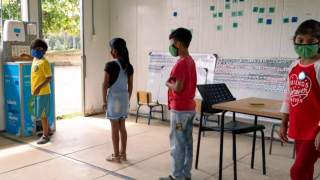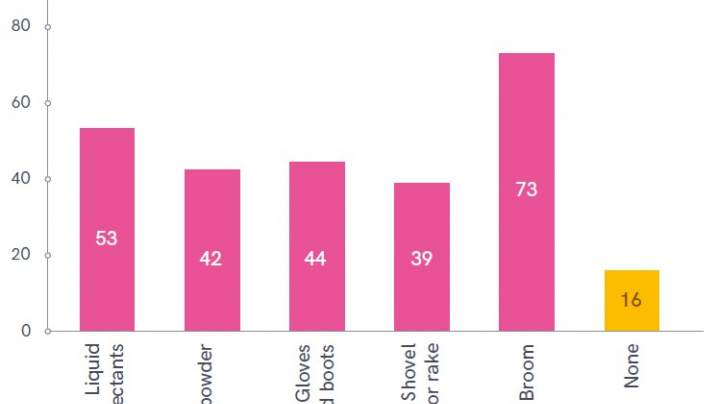As schools gradually reopen and lift COVID-19 restrictions, there is an opportunity to ‘build back better’ and ensure that schools are better prepared to stay open and support children’s education, nutrition, and well-being during future pandemics.

Defining pandemic preparedness
Infection prevention and control (IPC) needs to extend beyond the provision of basic WASH services and include additional measures related to hygiene, cleaning, disinfection and waste management.
Pandemic preparedness and response planning has led to a renewed focus on the role of hygiene promotion in preventing the spread of infectious diseases. Schools have an important role to play in promoting the formation of healthy habits and behaviours among children. Environmental cleaning is also a major focus of IPC strategies in schools and requires that school managers have basic materials available for regular cleaning and disinfection of the school environment, including classrooms, canteens and playgrounds. Additionally, improving solid waste management has been identified as a priority for pandemic preparedness and response.
Monitoring pandemic preparedness
Evidence suggests that learning losses associated with the COVID-19 pandemic have disproportionately affected the poorest and most disadvantaged children. Pandemic preparedness is therefore crucial to meeting SDG 4 and the ability of schools to provide an ‘inclusive and equitable quality education’ during future pandemics.
Regular and timely monitoring of WASH and IPC in schools is an important part of pandemic preparedness and response. For example, in response to COVID-19, a handful of countries conducted nationwide assessments of the status of WASH in schools to identify schools that did not meet national WASH standards and required additional support to safely reopen.
While an increasing number of countries have data on basic WASH services in schools, few countries have data on elements of pandemic preparedness beyond basic WASH services. These data provide interesting insight into coverage of additional elements of IPC. However, indicators and definitions vary between countries and data sources. For example, some countries collect information on the cleanliness of toilets, classifying facilities as ‘extremely clean’, ‘clean’, ‘somewhat clean’ and ‘not clean’ based on observations by teachers while some countries collect information on the frequency that toilets are cleaned.

The JMP 2020 progress update on WASH in schools had a special focus on COVID-19 and the 2022 JMP WASH in schools data update includes a thematic pullout on pandemic preparedness that highlights examples of emerging national data which go beyond the basic service indicators used for global monitoring and provides additional insights into specific challenges related to improving pandemic preparedness and response in schools. The WASH in Schools Network has also documented country-level examples of good practices designed to improve pandemic preparedness and response by strengthening the enabling environment for WASH in schools.